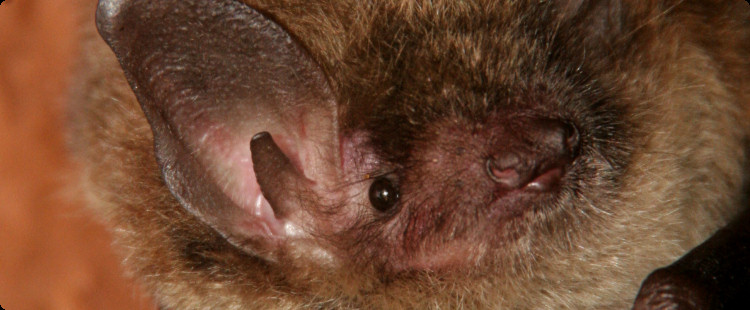|
Wildlife Windows has designed and installed camera systems to watch a wide variety of species. Our specialisms are birds and mammals but we have also designed systems for fish, invertebrates and landscapes. Our A-Z is intended to illustrate the variety of species WW has worked with and how they can be incorporated into complete systems. The majority of images on this page are from systems we have provided.
Please look through our A-Z to find the species you want to watch; if it is not in the list please do contact us as we can almost certainly design a system for your needs. We are constantly aiming to innovate. |
A
| Auks |
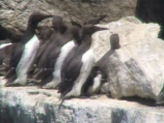 |
Seabirds use premium nesting cliffs year after year. Once installed cliff
camera systems can explore the otherwise difficult to see breeding activities of seabirds such as guillemots, razorbills and
kittiwake.
Wildlife Windows has installed a rugged ptz (pan-tilt-zoom) camera 30 feet down a 90 foot cliff face on the Isle of Portland,
Dorset. Images from the camera are viewed 700m away (via fibre optic) at the Portland Bill lighthouse. The camera is controlled at this
location as well as the nearby Portland Bird Observatory and via the internet.
|
|
|
|
|
Back to Alphabet Line
B
| Badgers |
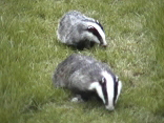 |
Wildlife enthusiasts are great fans of badgers, they are a
fascinating species to watch and monitor.
WW has designed and used a variety of camera systems for watching badgers from motion
sensing monitoring equipment to building artificial badger setts with integrated cameras |
|
|
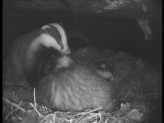 |
Camera systems to watch badgers
could range from basic bullet cameras with infrared illumination to remotely controlled pan-tilt-zoom systems.
Ecological
consultants may need to video record the comings and goings at a sett in which case our motion sensing PVR unit could be used.
WW
has designed and built two artificial badgers setts with integrated cameras, the image opposite is from inside one built in Dorset. As
badgers have protected species status WW can advise on any camera works intended. |
|
|
|
|
|
|
|
| Barn owl |
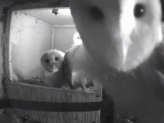 |
The barn owl is an iconic species and definitely a favourite amongst wildlife enthusiasts.
Barn owls will
occupy nesting boxes very readily and when established can use the same site year after year. WW has had years of experience working with
barn owls (monitoring, surveying and filming) so can supply a variety of nesting boxes and camera systems to suit the particular
circumstances.
WW staff are licensed to undertake barn owl surveys for protected species project planning. Site surveys
and recommendation reports can be produced for the relevant authorities. |
|
|
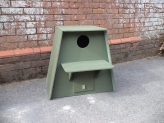 |
WW uses four different box designs for barn owls.
Two boxes are for interior use (1 specifically designed for camera use) and two for exterior use (1 specifically designed for camera
use). The box opposite is an exterior box to take an integrated camera.
4 types of boxes
Exterior box (designed to house integral camera)
Exterior A frame, primarily for
conservation but can house a camera for monitoring/inspection without disturbance.
Interior camera box
Interior
conservation box (tea chest type) |
|
|
|
|
|
|
|
| Bats |
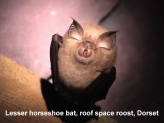 |
Setting up camera systems to watch and monitor bats can be challenging, not only because bats are hard to view but because
of their protected species status. Bats that inhabit open roof spaces and some boxes can be viewed with camera systems. Please contact us to
discuss your specific requirements.
WW's cavity inspection camera can be used by ecological consultants to survey for
bats. |
|
|
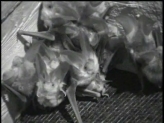 |
The image opposite is a maternity roost of brown log-eared bats in a roof space in Dorset. This image was delivered through
a pan-tilt-zoom camera on the floor of the loft. The camera could be operated without having to enter the roof space. |
|
|
|
|
|
|
|
| Beaver |
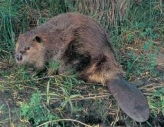 |
Although this is a species WW hasn’t had the opportunity to work with in the UK we can offer advice and supply camera
equipment to watch and monitor beaver behaviour.
Key principles and equipment for monitoring mammals with camera systems would
apply. |
|
|
|
|
| Bees |
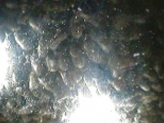 |
WW has successfully installed cameras inside a honey bee hive. This project was experimental and challenging, however, did
meet with success. A control button at the viewing location was pressed to illuminate the inside of the hive temporarily. |
|
|
|
|
| Birds of prey |
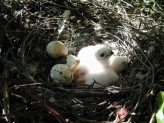 |
WW specialises in camera systems for birds of prey as one of our managers (Jason Fathers) is an experienced raptor worker. Jason has been involved in raptor projects for over 20 years, building
and installing boxes, artificial platforms and climbing trees to nests for camera and monitoring projects.
Species we have
worked with in the uk are:
Peregrine, kestrel, hobby, buzzard,
red kite, sparrowhawk, several owl species and osprey ( nest platform
building). |
|
|
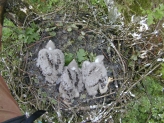 |
WW can advise on camera projects involving protected species. |
|
|
|
|
|
|
|
| Blue tit |
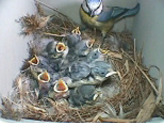 |
WW has been designing and building camera boxes for titmouse species for many years. We have built and used a variety
of shapes, sizes and camera configurations. The design we have settled on uses a ‘side-view’ camera which can easily be moved to a different
box or removed for winter storage. We believe our colour camera system delivers the best quality video images available from this type of
box. Have a look at our video example and decide for yourself. |
|
|
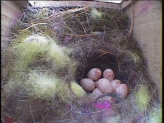 |
We build our own white and infrared LED circuits, adjusting the
brightness to get just the right amount of light. White lights are controlled by an LDR (light dependent resistor) so they come on and off
with the sun, mimicking daylight.
Tit box cameras can be incorporated into a multiple camera system or
viewed on their own. Schools often have their tit box camera connected the IT network some it can be viewed by several children /
classrooms at once. |
|
|
|
|
|
|
|
| Bullfinch |
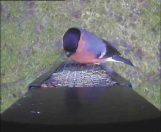 |
Bullfinches use bird feeders and are regular visitors to some of the peanut feeder cameras we have installed (as
in this photo). This is probably the most likely viewing opportunity, though nest cameras are also available for them. |
|
|
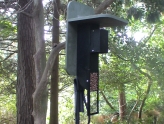 |
Bullfinches make open nests for which an external camera can be used. Nest cameras for this species need to be very small and
discrete and great care must be taken when installing them. |
|
|
|
|
|
|
|
| Buzzard |
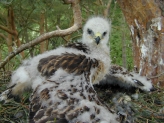 |
The British buzzard population has made a remarkable recovery in the last 50 years and so there are plenty of
opportunities to install cameras to watch these impressive birds.
WW has installed at least ten cameras at buzzard nests over the
years and so is well placed to advise on how best to set up a system. WW can do the whole installation for you as we have the necessary
camera and climbing skills. |
|
|
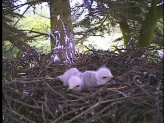 |
Installing a camera system to watch buzzards requires a lot of planning. Normally the biggest hurdle is
transmitting the video signal to a location where it can be viewed. At buzzard sites this often involves using a wireless transmission
system.......unless you are lucky to have a site close enough to be cabled! |
|
|
|
|
|
|
|
Back to Alphabet Line
C
| Cavity-nesting birds |
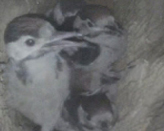 |
WW's pole-mounted cavity inspection camera can be used to view and monitor cavity nests.
Over 5 years in development our pole camera has been used to monitor severall species, for example:
great spotted woodpecker, green woodpecker and ring-necked parakeet.
Pole-mounted cameras are designed for looking into high-level
bird nest (and bat) cavities without the aid of a ladder. The cameras are tiny, and poles can be up to 15m high. Video and sound are
transmitted by radio to a handheld viewer on the ground. |
|
|
|
|
| Corvids |
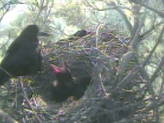 |
Ravens, choughs, crows, rooks, jays, magpies and jackdaws can all be viewed with camera systems. All of these species
except jackdaws would require an external weatherproof camera and probably some serious climbing. WW has had experience with several of these
species and are able to undertake projects involving climbing / camera installation.
Jackdaws will
inevitably be viewed by systems incorporating medium to large nest boxes. |
|
|
|
|
Back to Alphabet Line
D
| Deer |
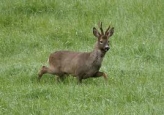 |
If you need to monitor deer WW can suggest / supply two pieces of camera equipment for this:
Wildlife
Windows' Portable Video Recording unit (motion sensing software)
Various 'trail cameras' (also known as stealth cameras and
camera traps)
|
|
|
 |
Trail cameras are triggered by changes in heat (PIR). They are
small, relatively
inexpensive and the batteries can last 2-6months. However, one negative
aspect is that the trigger time can be delayed for up to 2
seconds.
WW's PVR unit is more expensive, the batteries are heavy and relatively short lived (1-2 weeks) but the trigger
time is very fast, 0.2 seconds.
You need to decide what is most important to you. |
|
|
|
|
|
|
|
| Dormouse |
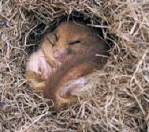 |
If you need to monitor dormice WW can suggest / supply two pieces of camera equipment for this:
Wildlife
Windows' Portable Video Recording unit (motion sensing software)
Various 'trail cameras' (also known as stealth cameras and
camera traps) |
|
|
|
|
Back to Alphabet Line
F
| Falcons |
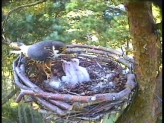 |
WW has specialist skills and knowledge for setting up camera systems for falcons. We have installed systems for three
of the four British breeding falcons (peregrine, hobby and kestrel).
|
|
|
|
|
| Feeders |
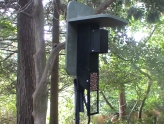 |
WW has designed and used a variety of bird feeder cameras. Our latest model is a robust, weatherproof peanut feeder with
integrated camera.
Many types of birds (mostly woodland birds) will use this feeder, however, some species not normally associated
with perching-hanging feeders will also use it (ie chaffinch, bullfinch, robin).
The camera is downward facing and set up to give
very close views of the birds. The whole unit has been designed to be completely rodent proof. |
|
|
|
|
| Fish |
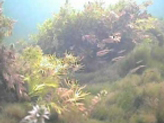 |
Due to the nature of the environment underwater camera systems are challenging and can be expensive. WW has deployed
cameras in fresh water streams, designed pole mounted cameras for viewing ponds as a well as cameras for aquariums. |
|
|
|
|
Back to Alphabet Line
G
| Goshawk |
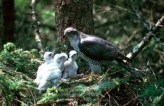 |
Although WW has not installed a camera system for this species yet we have for a number of similar species (including
challenging transmission systems for buzzard and sparrowhawk).
We are specialists in bird of prey camera
systems having all the necessary climbing and installation skills.
|
|
|
|
|
| Great spotted woodpecker |
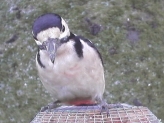 |
WW’s wireless nest inspection camera can be used to monitor great spotted woodpecker nests. Researchers
and nest recorders will find this a very useful piece of equipment. A miniature wireless camera is mounted to a telescopic pole (poles of up
to 65 feet can be used). WW can design and build bespoke inspection cameras to meet your needs including wired versions.
Great
spotted woodpeckers are frequent visitors to our peanut feeder cameras. |
|
|
|
|
| Great tit |
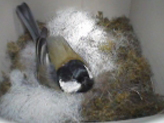 |
WW has been designing and building camera boxes for titmouse species for many years. We have built and used a variety
of shapes, sizes and camera configurations. The design we have settled on (best in our opinion) uses a ‘side-view’ camera which can
easily be moved to a different box or removed for winter storage.
We believe our colour camera system delivers the best quality
video images available from this type of box. Have a look at our video example and decide for yourself. |
|
|
|
|
| Green woodpecker |
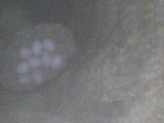 |
WW’s wireless nest inspection camera can be used to monitor green woodpecker nests. Researchers and nest
recorders will find this a very useful piece of equipment. A miniature wireless camera is mounted to a telescopic pole (poles of up to 65
feet can be used).
WW can design and build bespoke inspection cameras to meet your needs including wired versions. |
|
|
|
|
| Greenfinch |
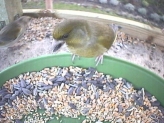 |
Greenfinches use bird feeders and are regular visitors to some of thepeanut feeder cameras we have installed(as in
this photo).This is probably the most likely viewing opportunity, though nest cameras are also available for them. |
|
|
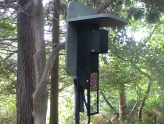 |
Greenfinchesmake
open nests for which an external camera can be used. Nest cameras for this species need to be very small and discrete and great care must be
taken when installing them |
|
|
|
|
|
|
|
| Grey heron |
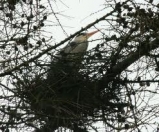 |
In February 2012 Wildlife Windows installed two static image
cameras on heron nests for the Greensand Trust. These nests were 85 feet
from the ground in separate trees. Images were transmitted back to the
visitors' centre 120m away via copper cable.
A short video clip from one of these nests can be seen via the video link below.
|
|
|
|
|
| Gulls |
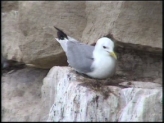 |
Setting up camera systems to watch gulls and terns could take various forms from a static camera on a roof to a PTZ
(pan-tilt-zoom) camera on a cliff face or floating nesting platform.
WW has had experience with seabird cameras and has
in-house climbing installation skills. |
|
|
|
|
Back to Alphabet Line
H
| Harriers |
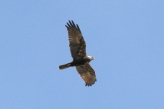 |
Wildlife Windows’ extensive experience of working with birds of prey can be applied to setting up a camera system to
watch harriers at the nest. We would welcome any enquiries of this nature. |
|
|
|
|
| Hedgehog |
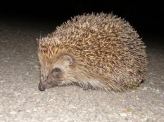 |
WW can advise on camera systems and housings for hedgehogs; whether this is a static camera for watching live images or
a motion sensing system for monitoring purposes. |
|
|
|
|
| Herons |
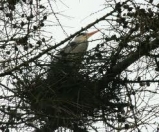 |
In February 2012 Wildlife Windows installed two static image cameras on heron nests for the Greensand Trust. These nests were 85 feet from the ground in separate trees. Images were transmitted back to the visitors' centre 120m away via copper cable.
A short video clip from one of these nests can be seen via the video link below. |
|
|
|
|
| Hirundines |
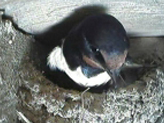 |
Swallows, house martin and sand martin can all be watched with miniature camera systems.
WW has set
up many swallow and house martin systems and designed a camera system for an RSPB (Radipole) sand martin wall.
Swallow and sand
martin systems can incorporate addition lighting controlled by light dependent resistors, switching them off and on with the sun. |
|
|
|
|
| Hobby |
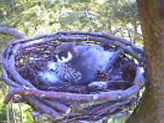 |
Jason Fathers of Wildlife Windows has been working closely with hobbies for 8 years. In 2005 Jason successfully set up a
camera system to watch and film hobby throughout the whole breeding season. Hobby is a difficult species for which to set up a camera system
as you can never be sure exactly where they will nest.
However, Jason’s experience, together with the use of artificial
nesting baskets, can help increase the chances of success. |
|
|
|
|
| House Martin |
 |
Setting up cameras to watch the comings and goings of house martins to their nests is relatively straight forward.
Getting an image inside a nest is not so easy and tends to depend more on luck than judgement (the occasional nest may be built in such a way
as to allow an internal view). However, certain precautions need to be taken to avoid disturbance. |
|
|
|
|
Back to Alphabet Line
I
| Insects / Invertebrates |
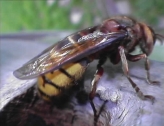 |
WW has designed a camera system to view live images within a honey bee hive and used cameras for close up
images of other invertebrates.
We welcome the chance to design new systems for new species.
|
|
|
|
|
Back to Alphabet Line
K
| Kestrel |
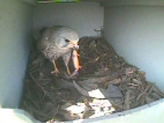 |
The common kestrel is a dynamic little falcon found in a wide variety of habitats from moorland to inner cities. Kestrels
will readily occupy nest boxes providing a great wildlife watching experience with the use of a nest camera. Wildlife Windows has
supplied and installed many kestrel cameras delivering high quality images. |
|
|
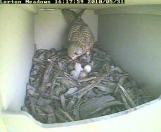 |
Setting up cameras to watch breeding kestrels needs
careful planning. Installing the right box in the right place with a feasible means of signal transmission is likely to achieve good results.
Of course it helps if you already have birds in the area, however, in the right habitat, a well located box is likely to be found by kestrels
sooner or later. Kestrels don't build their own nests so are looking for sites like a cavity in a tree, an old crow's nest, a ledge
on a cliff or a building or....a nest box. WW has installed scores of kestrel boxes, many with integrated cameras so are well placed to
advise, supply and install everything needed for setting up a kestrel camera system.WW kestrel images have been viewed at farms, reserve
visitor centres, power stations and across the world via live video streaming.
Nesting boxes
In lowland Britain male kestrels tend to stay within or close to their breeding territories
over the winter. They are very familiar with their territories so almost certainly have a good idea of where potential nest sites are to
'show' to the female well ahead of the actual breeding period. For this reason, ideally, nest boxes need to be installed before the end of
December. Very few kestrel boxes installed in the new year are used in the same year. |
|
|
|
|
|
|
|
| Kingfisher |
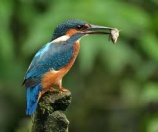 |
Setting up a camera to watch the comings and goings of kingfisher at their nest entrance would be fairly straight
forward. Disturbance issues need to be taken into account as kingfishers are a protected species.
Aiming to get live images from
within a kingfisher nesting chamber would require considerable planning and the use of a purpose built nesting chamber. WW would welcome the
opportunity to design such a system. |
|
|
|
|
Back to Alphabet Line
L
| Little egret |
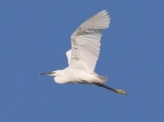 |
Although WW has not yet installed a camera system for these species we have been asked to plan for potential
systems. Options for heron and little egret nests could be simple static cameras or controllable PTZ (pan-tilt-zoom) systems. As the majority
of heronries are found on islands cabling and powering could be challenging but not insurmountable. |
|
|
|
|
| Little owl |
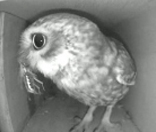 |
WW can supply purpose built camera boxes for little owls. We have successfully used these boxes to watch little owls
as well as incorporating them into motion sensing systems for research products.
|
|
|
|
|
| Long-eared owl |
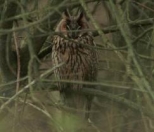 |
Although WW has not yet installed a camera system for this species we would welcome the opportunity to do
so.
We have had extensive experience with species that use similar systems as long eared owl would need, (ie buzzard, hobby, sparrowhawk). |
|
|
|
|
Back to Alphabet Line
M
| Mammals |
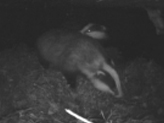 |
Wildlife Windows has had extensive experience in setting up camera systems to watch or monitor mammals. We have built and
installed cameras inside two artificial badger setts, an artificial otter holt and have been commissioned to undertake remote monitoring of
otters for EIAs.
Species we have worked closely with in the U.K. are:
Otters, badgers, foxes and some bat species.
Live viewing or motion sensing systems used for these species could be applied to almost any other land based mammal. |
|
|
|
|
| Mink |
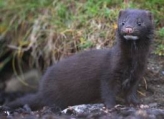 |
Ecological consultants and reserve managers may find it necessary to monitor the comings and goings of mink.
WW’s
portable video recording unit (using motion sensing software) can be applied to mink monitoring.
Also available for this purpose is
one of a variety of Wildlife ‘Trail’ Cameras. |
|
|
|
|
Back to Alphabet Line
N
| Nightjar |
 |
Nightjars nest on the ground and are relatively easy candidates for nest cameras....IF you can find a nest.
WW can point you in the right direction….to literature detailing nest finding methods.
|
|
|
|
|
| Nuthatch |
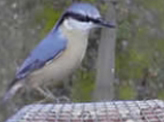 |
Nuthatches are regular visitors to WW’s peanut feeder cameras.
WW has not filmed nuthatch within a nest box
but would welcome the opportunity to design a system capable of this. |
|
|
|
|
Back to Alphabet Line
O
| Osprey |
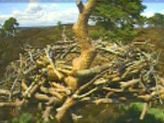 |
Wildlife Windows has been commissioned by several local conservation organisations to build artificial nesting platforms
for osprey around the Poole Harbour basin. Our extensive knowledge of birds of prey combined with the necessary tree climbing skills has
enabled us to build 9 of these platforms to date. |
|
|
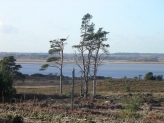 |
As the northern UK population of ospreys has increased we have been seeing an
increased number of young and adult ospreys spending time in the Poole Harbour area during the late summer. We estimate that as many as 12-15
ospreys can be in the harbour at any one time.
The aim is to encourage these ospreys to take up residence once again in the south
of England.
Organisations involved in this area project so far are:
RSPB, Dorset AONB, Natural England and the Forestry
Commission. |
|
|
|
|
|
|
|
| Otter |
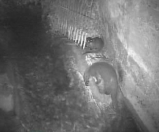 |
Wildlife Windows has been setting up cameras systems to watch and monitor otters for several years now. We have had success
in recording some rather dynamic footage of these illusive creatures. We have helped install camera systems into artificial holts.
WW’s portable video recording unit (PVR), using motion sensing software, can be applied to monitoring otters in the field.
Also available for this purpose is one of a variety of Wildlife ‘Trail’ cameras (camera traps/ stealth cameras). However, although trail
cameras are cheaper and easier to deploy than WW’s PVR the trigger times for these units can be relatively slow (up to 2 seconds). |
|
|
|
|
| Owls |
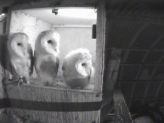 |
WW specialises in camera systems for owls. We have had years of experience in installing and monitoring boxes for barn
owls, little owls and tawny owls. Two of our systems have been used to stream live images for the Dorset Wildlife Trust and RSPB.
Purposed built camera boxes can be supplied or boxes solely for conservation purposes.
Species we
have worked with in the UK are:
Barn owl, little owl and tawny owl.
We would welcome the oportunity to
set up a system for other owl species.
WW staff are licensed to undertake barn owl surveys for protected
species project planning. Site surveys and recommendation reports can be produced for the relevant authorities. |
|
|
|
|
Back to Alphabet Line
P
| Peregrine |
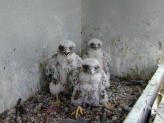 |
Wildlife Windows has installed camera systems to monitor nesting peregrines at several sites inculding:
St. Michael & All Angels Church, Exeter
Sheffield University
St. Wulfram's Church, Grantham
The UK population of peregrines has recovered tremendously following its decline in the 60’s and 70’s. New pairs are taking to man-made structures such as churches, high-rise buildings and pylons every year.
Peregrines nesting on buildings present fairly straight forward opportunities to set up camera systems as they are relatively accessible and usually have a power source at hand.
Jason Fathers of WW is an active Schedule 1 license holder for colour-ringing nestling peregrines.
Peregrines are a Schedule 1 protected species so systems need to be set up well before the courtship and nest choosing period. |
|
|
|
|
| Pine marten |
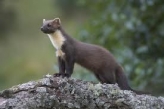 |
Ecological consultants and reserve managers may find it necessary to monitor the comings and goings of pine
martens.
WW’s portable video recording unit (using motion sensing software) can be applied to marten monitoring.
Also available for this purpose is one of a variety of Wildlife ‘Trail’ cameras. |
|
|
|
|
| Ponds |
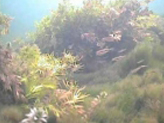 |
Due to the nature of the environment underwater camera systems are challenging and can be expensive. WW has deployed
cameras in fresh water streams, designed pole mounted cameras for viewing ponds as a well as cameras for aquariums. |
|
|
|
|
Back to Alphabet Line
R
| Raptors |
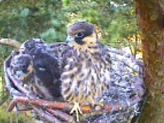 |
WW specialises in camera systems for raptors.
See birds of
prey
Species we have worked with in the uk
are:
Peregrine, kestrel, hobby, buzzard, red kite, sparrowhawk, several owl species and osprey ( nest platform building). |
|
|
|
|
| Raven |
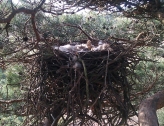 |
The number of ravens in the UK has increased substantially over the last 15-20 years.
Many of these birds have
taken to nesting on electricity pylons; however, those nesting in trees (and on cliffs) are good candidates for nest cameras if
setting up a transmission system to a viewing location is possible.
Ravens are relatively early nesters so planning for a camera
system needs planning well before Christmas. A good thing about ravens is they are very faithful to traditional nesting sites. |
|
|
|
|
| Red kite |
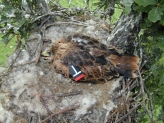 |
The UK population of red kites has increased dramatically since the efforts of conservationists to reintroduce them to
former strongholds (combined with the lack of persecution). The red kite was voted ‘bird of the century’ by the British Trust for Ornithology
in 1999.
Red kites are a Schedule 1 protected species so camera systems need to be set up well before the breeding period. This can
be difficult as, like buzzards, red kites tend to have a core nesting area but may use one of two or three available nests. |
|
|
|
|
| Red squirrel |
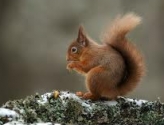 |
Red squirrels are charismatic little creatures. The easiest place to set up a camera system to watch red squirrels
is at a feeding station. Close up images can be guaranteed at feeding stations.
Wildlife Windows is lucky to have a population
close at hand on Brownsea Island. We have help the Dorset Wildlife Trust with their red squirrel camera system on the island. |
|
|
|
|
| Reptiles |
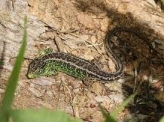 |
Whether you want to watch live images, record footage or monitor locations for reptiles Wildlife Windows can help you
design the right camera system. |
|
|
|
|
| Robin |
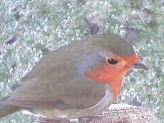 |
Robins are good candidates for mobile ‘bullet/lipstick’ type cameras. If you have a regular spot where robins nest it
would be advisable to install a dummy camera ahead of the nesting period. In this way the real camera can be installed when needed without
disturbing the birds. If you haven’t been able to install a dummy camera WW can advise you on how to safely install a real camera. |
|
|
 |
Robins are regular visitors to WW’s feeder camera |
|
|
|
|
|
|
|
| Rook |
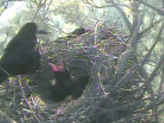 |
Generally rook nests are difficult to access as they tend to be out on the extremes of relatively thin branches. However,
occasionally rookeries are located in trees that can be climbed safely. In these cases it is possible to set up camera systems for watching
rooks at the nest. Wildlife Windows has accomplished this at one site in Dorset. |
|
|
|
|
Back to Alphabet Line
S
| Sand martin |
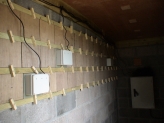 |
Sand martins are dynamic little birds, their spring return is always eagerly anticipated. Wildlife Windows has
designed and installed a camera system to watch nesting sand martins for the RSPB. This was for a brand new artificial sand martin wall. This
wall has not been occupied yet but birds have been seen taking an interest in it so we hope there will be footage in 2012. |
|
|
|
|
| Seabirds |
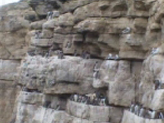 |
See auks, gulls and terns |
|
|
|
|
| Sparrowhawk |
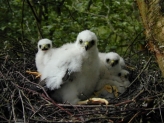 |
As specialists in birds of prey Wildlife Windows has had extensive experience with sparrowhawks, both with camera
installations and monitoring nest sites.
The video example below, from one of our cameras, shows some very exceptional sparrowhawk
behaviour, that of polygynous breeding (one male and two females breeding as a group). Both females laid 3 eggs each in the same nest
incubating simultaneously then rearing the chicks together. We believe this is the only time this phenomenon has been filmed. |
|
|
|
|
| Spotted flycatcher |
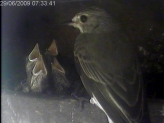 |
Spotted flycatchers are good candidates for mobile ‘bullet/lipstick’ type cameras. If you are lucky enough to
have a regular spot where flycatchers nest it would be advisable to install a dummy camera ahead of the nesting period. In this way the real
camera can be installed when needed without disturbing the birds. If you haven’t been able to install a dummy camera WW can advise you on how
to safely install a real camera. |
|
|
|
|
| Starling |
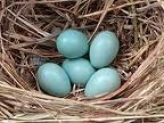 |
Starlings readily take to nest boxes and can offer good opportunities for watching them through the nesting period.
Often starlings will have a second brood once the first has upped and left home which is great as this extends the watching period. |
|
|
|
|
| Stock dove |
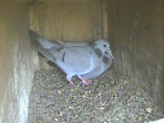 |
Stock doves invariably end up using boxes installed for other species (eg. kestrel, barn owl and tawny owl) so
opportunities to watch these birds usually present themselves. |
|
|
|
|
| Swallow |
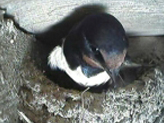 |
Wildlife Windows has set up lots of cameras to watch swallows. Swallows are a very popular species to watch as they usually
have two and sometimes three broods of chicks. WW has set up multiple camera systems in swallow ‘colonies’ as well as incorporated additional
lighting to give the best quality image. WW can advise on how best to install systems without disturbing the birds. |
|
|
|
|
| Swans |
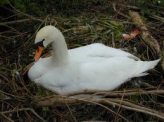 |
WW has set up camera systems to watch nesting swans combined with the ability to watch the birds as they move around
waterways. For this we have used PTZ (pan-tilt-zoom) cameras mounted in strategic positions to give a view of the nest and waterway. |
|
|
|
|
| Swifts |
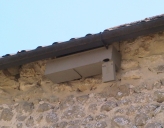 |
Swifts are quite particular about their nesting sites. However, they can sometimes be persuaded to use purpose built
nesting boxes. WW can supply such boxes with integrated cameras and advise on how to go about attracting birds to the boxes. |
|
|
|
|
Back to Alphabet Line
T
| Tawny owl |
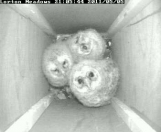 |
Tawny owls are one of the UK’s earliest breeding species; most years eggs are reported at some nesting sites in
January. However, the majority of tawny owls start laying in the middle of March.
So, if you are planning to watch nesting tawny owls you
need to get prepared early. WW do not advise installing a camera once the breeding process has begun as tawny owls are more susceptible to
disturbance during this period than other species. |
|
|
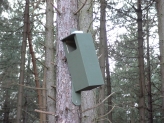 |
WW’s tawny owl camera boxes have been tried and tested. These can be supplied
with integrated cameras, cabling and instructions for installation. |
|
|
|
|
|
|
|
| Terns |
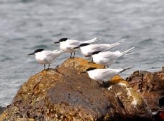 |
Floating tern islands and gravel bars are often created by conservation organisations specifically for nesting terns. WW
can help these organisations design camera systems to watch the birds taking up residence. These sites can be challenging as they are usually
long distances from a power supply and surrounded by a body of water.
PTZ (pan-tilt-zoom) cameras will make the most of tern
watching opportunities. |
|
|
|
|
| Tits |
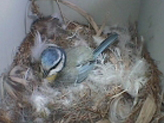 |
WW has been designing and building camera boxes for titmouse species for many years. We have built and used a variety of
shapes, sizes and camera configurations. The design we have settled on uses a ‘side-view’ camera which can easily be moved to a different box
or removed for winter storage.
We believe our colour camera system delivers the best quality video images available from this type
of box. Have a look at our video example and decide for yourself. |
|
|
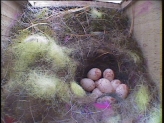 |
We build our own white and infrared LED circuits, adjusting the
brightness to get just the right amount of light. White lights are controlled by an LDR (light dependent resistor) so they come on and off
with the sun, mimicking daylight.
Tit box cameras can be incorporated into a multiple camera system or viewed on their own. Schools
often have their tit box camera connected the computer network so it can be viewed by several children / classrooms at once. |
|
|
|
|
|
|
|
Back to Alphabet Line
W
| Wild boar |
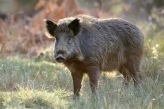 |
Although this is a species WW hasn’t had the opportunity to work with in the UK we can offer advice and supply camera
equipment to watch and monitor wild boar.
Key principles and equipment for monitoring mammals with camera systems would
apply.
|
|
|
|
|
| Woodpeckers |
 |
WW’s wireless nest inspection camera can be used to monitor woodpecker nests. Researchers and nest recorders will
find this a very useful piece of equipment. A miniature wireless camera is mounted to a telescopic pole (poles of up to 65 feet can be
used).
WW can design and build bespoke inspection cameras to meet your needs including wired versions.
Great spotted woodpeckers are frequent visitors to our peanut feeder cameras. |
|
|
|
|
| Wren |
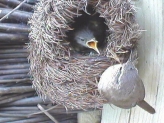 |
Wrens make such tightly domed nests that trying to get a camera inside a nest is not possible. However, watching the comings
and goings at a nest entrance can be quite rewarding, especially if a camera is set to view very close up images. |
|
|
|
|
Back to Alphabet Line
|

